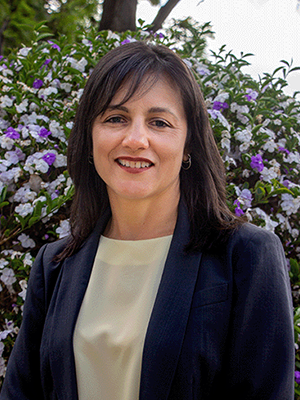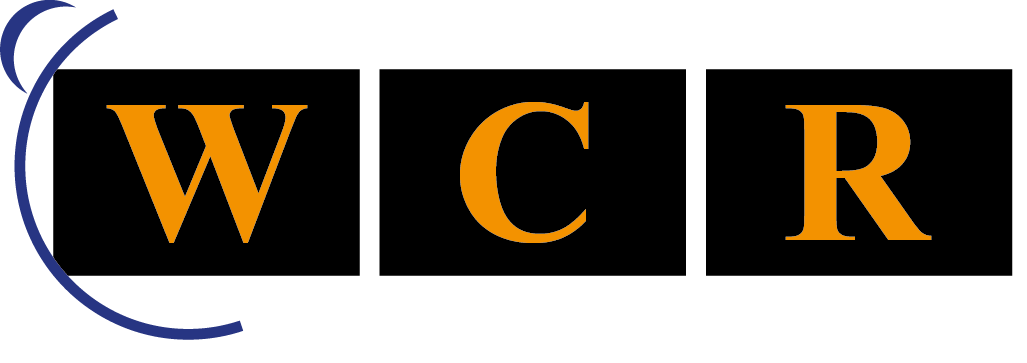Embracing financial inclusion
The Bank of St Helena has a vision to be known as the financial cornerstone from which their customers can confidently build a sustainable and prosperous economy for the Island of St Helena. Their mission is to develop and deliver banking products and services that are appropriate, affordable and accessible to all to enable sustainable development. World Commerce Review interviews Josephine George, Managing Director of the Bank of St Helena, the recipient of the WCR award Best Bank for Financial Inclusion 2023, who discusses the Bank’s embracing of financial inclusion in an ever-changing world.

Please describe the financial inclusion initiatives that the Bank of St Helena have put in place.
Financial inclusion is at the heart of the business of Bank of St Helena. This is supported by the mission which is to develop and deliver banking products and services that are appropriate, affordable and accessible to all. Since its inception in April 2004, the Bank has progressively increased its product offering to customers to support their journey with us.
Prior to this time there were no banking services offered other than that by the Government Savings Bank which supported cash deposits and withdrawals. The lack of exposure beyond St Helena due to the geographic isolation, the high costs to leave the island and limited access to internet services are some factors that has had an impact on our customers’ perceived need for or confidence in modern banking services.
However, as time passed there has been technological improvements, a migration of people on and off the island and the skills and experience of Bank staff has grown. These factors have supported a shift in customer expectation and has shaped the need for and the delivery of the banking products and services offered today.
Serving a resident population of approximately 4,200 and 1,000 on our sister island, Ascension Island, the Bank now offers a range of products and services which one might expect from a retail bank. This includes current and savings accounts, personal and commercial lending services, international remittance services, foreign currency exchange services, cash advances on all major international debit and credit cards, Local Debit Cards and Online Banking services.
Savings accounts includes Child Bond Savings which are designed to encourage our youth and their families to start saving from young towards their future aspirations and needs, whether this is their education, material goods or a nest egg for a rainy day. In the absence of a national pension scheme the Bank also introduced a savings scheme for customers to enable them to save towards life after retirement in the form of a New Life Account. Both the Child Bond Savings Account and the New Life Account offers an attractive interest rate. A Term Savings Account was introduced and allows our customers to save towards short-term goals.
A range of diverse lending products offered are aimed to support the island’s long-term goals for development and sustainability. These include personal, mortgage and commercial lending products designed to ensure they are fit for purpose and suit the local needs and demands. The international remittance service allows customers to transfer funds from their local bank accounts to beneficiaries residing overseas and to receive funds into their local account from overseas.
In 2014 the Bank launched its Online Banking product in an attempt to provide customer convenience. The uptake was slow which could be attributed to unaffordable internet access and the product not fully meeting all expectations of an online platform.
However, being a local bank, it was deemed important to provide those customers residing offshore e-banking services to fulfil their local banking needs from abroad. With the introduction of the Bank’s bespoke Local Debit Card and St Helena Pay Services in 2017, coupled with enhanced functionality of Online Banking, the uptake of the service began to see growth. Affordability, jurisdiction and the market size are challenges that makes it difficult for Bank of St Helena to operate an issuing license which will allow us to offer card association branded payment cards such as Mastercard and Visa to the local community, therefore a complete closed loop debit card solution was developed and launched.
With the inability to facilitate a card payment acquiring service to allow local merchants to accept tourist card payments, the Bank has created an innovative solution to make card payments available for tourists to avoid the necessity of having to use cash for every transaction.
This solution is the Tourist Card, a local prepaid GBP cash card enabling tourists to use the island’s Local Debit Card payment services to pay for goods and services provided by local businesses. The imminent roll out of the Bank of St Helena’s Tourist Card will enhance our financial inclusion one step further.
How will these programmes help those citizens previously excluded from modern banking facilities?
The introduction of the various products has allowed our customers to have access to finance in a way in which was never available before. For many, they now have access to finance to build or purchase their own homes quicker, have the ability to purchase goods and services that would have otherwise only be gained through years of saving, such as planned holidays. This was almost impossible for many before the Bank offered lending services. The offering of commercial lending products has also assisted the local economy in its development through various loan offerings.
St Helena Pay, Local Debit Cards and Online Banking has revolutionised how payments are now made on island, although bespoke, this service allows everyone on island to be part of the digital payment environment. Safety and security measures features very high on the Bank’s agenda, with industry standards being followed. The introduction of products such as Local Debit Cards and Online Banking also equips customers who leave the island exposure to banking products and services which are a part of everyday life in the majority of the world.
How did the initiative come about?
The Tourist Card initiative has come about as a result of the Bank endeavouring to fill an island need. Until now, visitors to St Helena were limited to the options of carrying cash or taking cash advances of their debit/credit cards by visiting the Bank once on island. With a card payment acquiring service not feasible at this time and with the expected increase in tourists to St Helena in the coming years, the Bank needed an ‘outside the box’ solution to make card payments available for tourists to avoid the necessity of having to use cash for every transaction.
This development has been in partnership with the Bank’s services providers International Financial Systems (IFS). It has been designed to provide convenience, be modern, be technologically based, keep costs minimal and puts compliance and safety as top priority. It has been built on the existing Local Debit Card infrastructure and there is no further expectancy placed on the locals for acceptance.
The Tourist Card is a prepaid GBP cash card using a virtual card which is downloadable to a mobile phone. It is envisaged the product will promote tourist spending and eliminate the previous impractical need to carry cash. The introduction of the Tourist Card will be one of the biggest achievements by Bank of St Helena.
Is this an ongoing programme?
Yes, this is an ongoing programme which sees Bank of St Helena being committed to ongoing development of its products and services that will continue to meet current needs and exceed the expectations of our customers, especially as we embrace and strive to become a bank that is digital by default.
What new developments are in the pipeline?
With mobile phones being introduced on island in 2015, one of our desired objectives is to offer various mobile banking services which will provide further convenience to our customers. However, at this time with internet connectivity not freely available, it does inhibit the possible uptake of these types of services. In the coming years with the introduction of the fibre optic cable it is hoped this will alleviate these concerns and Bank of St Helena will offer a range of apps to support customer banking needs.
What is your message to those individuals who are unbanked?
To those who are unbanked we would say get banked!
Please describe your career at the bank and how the banks structure has evolved over this period.
My career with Bank of St Helena spans fourteen years and began with me joining the Bank in 2008 in the role of Human Resources Manager. My previous work experience in various management and human resources roles provided me with the skills and experience needed to set-up the new function of human resources in the Bank at that time. This included implementing systems and processes for staff recruitment, development and retention.
Over the years I have used every opportunity to develop myself personally and professionally. This has enabled me to gain promotions within the Bank that has culminated to becoming successful for the role of Managing Director in 2017. During my years of employment with the Bank, the structure has seen much change to become the establishment we have today, one which supports the unique banking environment of St Helena. There have been changes in the organisational structure and product and services, all of which has been possible due to improved technological advancements, staff development, networking and more exposure to the world that operates outside of St Helena.
What developments and services have been driven by the internal and external factors of the St Helena economy?
The majority of development has been driven by either internal or external factors. Internal development of the Bank has been achieved from our growing knowledge and experience of the industry, upgrades of banking systems, professional development, customer feedback, networking and individual exposure to banking outside of St Helena.
The Bank endeavours to keep abreast with the local political, social, environmental, technological and legal environments in which we operate, to ensure it designs and offers products and services that are fit for purpose, which might mean they are not necessarily as one might find in traditional banking.
For example, the suite of lending products and services specifically caters to our customers personal needs as well as business needs for living on an island, whilst ensuring to comply to industry standards. Over the last five years there has been the introduction of a number of new or revised lending initiatives to support St Helena’s emerging economy such as financial assistance for young entrepreneurs, initiatives to support first-time homeowners, short-term contract financing and reduced interest rates on loans to our farming community. In addition to the local economy, the Bank also monitors the global environment as these issues do impact on our island’s economy and can have other financial implications for Bank of St Helena.
Global connectivity is clearly a key building block for the bank; what has been your strategy?
St Helena has felt the effects of limited global connectivity over the years whether through geographical isolation or technology isolation, all of which has had an impact on the development of the island’s economy and its overall aim to become a vibrant economy. The Bank’s strategy recognises that global connectivity is a key building block if it is to meet both the Bank’s and island’s aims and objectives.
Therefore, the Bank values and endeavours to develop the relationships we enjoy with various stakeholders and work towards expanding our network reach to better position ourselves in the global market. Expanding our networking ability through visits and bi-lateral meetings has enabled the Bank to work with others in the industry outside of St Helena to draw from their knowledge and experience, which in turn has allowed us to develop the service offered, but also supports others in gaining a better understanding of how banking operates and the challenges faced in a small environment. In addition to networking, professional development has been an important element to support our strategy to ensure that our staff have the right skills and experience to deliver on what the Bank promise.
What systems has the bank integrated into its infrastructure for the benefit of customers?
The Bank has integrated the SWIFT Platform into its infrastructure, which is the biggest international payment network in the world and allows our personal and business customers to send and receive monies in a standardised and secure way. The Local Debit Card solution also includes a local card issuance service and a bespoke merchant card terminal app and device which is supported by Online Banking for the benefit and convenience of customers.
St Helena is not in a position to offer ATM services due to various logistical and legal limitations and restrictions, and in the absence of such, the Bank introduced a cashback facility as part to the Local Debit Card solution. All transactions are real time, enabling local merchants to provide cash to customers outside of normal banking hours which benefits customers.
Bank of St Helena does not qualify to subscribe to existing BAC’s infrastructures. As an alternative, the Bank has created an interface via the Online Banking service to accept BACs formatted messages from businesses on island, all of which is processed in real time and is yet another bespoke solution to the benefit of our customers.
What is the medium- and long-term programme for the bank’s development?
The long-term aim for the Bank is to be known as the financial cornerstone from which our customers can confidently build a sustainable and prosperous economy for the island of St Helena. It is our mission to develop and deliver banking products and services that are appropriate, affordable and accessible to all.
What international programmes does the bank participate in?
In addition to the SWIFT international payments system, Bank of St Helena engages the services of an Investment Manager to manage Bank of St Helena’s investments.
The Bank also supports the learning and development of their staff and supports affiliations and memberships with professionally recognised institutes such as Chartered Banker Institute, Chartered Institute of Marketing and Chartered Institute of Personnel and Development.
Your background is in developing personnel skills and human resources. How have you employed these initiatives in staff development?
With a Human Resources background, I am fully aware that a company’s success is dependent on its most valuable assets, its people and it is vital that we manage and optimise this valuable strategic resource. Therefore, implementing a framework for managing, developing and optimising employee skills, abilities and competencies has been imperative. Being a Human Resources Manager and now the Manging Director, I have found it is important to provide encouragement to individuals, ensure adequate resources are available to support staff training and development, give recognition and provide/support incentives for staff performance.
As individuals we are all different and will be motivated by different factors, but the one thing I have learnt from experience is as managers we should lead by example, which is also my philosophy. I am extremely proud to lead a team of highly skilled, motivated, committed and dedicated employees, all of whom have worked hard to ensure the continued success of the organisation. The design and implementation of products and services to date is a testament to the innovation, skills and experience of our staff to find and produce solutions to meet the needs of our customers.
How does the bank work with local businesses to help them develop products and markets?
Being a small island with a limited population, the Bank knows its customers in the truest sense of the word. Customer interaction, feedback gathered and knowledge and experience of our customers and the environment enables the Bank to work with local businesses to meet its product and market requirements. In addition, the Bank works with the local Government to understand their national aspirations and endeavours to introduce products or service which support the island’s national strategic objective.
What are the key strengths of the St Helena economy?
The key strengths of the St Helena economy are not yet fully realised, however as a fledgling economy the island has a lot it can draw upon to become a thriving economy. The island is a British Overseas Territory that uses the local currency of St Helena Pound (SHP) which is at parity with Great British Pound (GBP). We are also an English-speaking island. With GBP being the fourth most traded currency in the world and English being one of the most spoken languages in the world, it places St Helena in an attractive position to live and trade. There is the potential for business development in eco-tourism, coffee production and fishing, all of which could have a significant positive effect on St Helena’s economy. However, the true potential is yet to be realised.
How do you think the bank will look in 10 years?
Bank of St Helena is optimistic about the future. In ten years, the Bank will become digital by default and would have been the key enabler to move to a cashless society. Bank of St Helena will be recognised as offering a modern banking service that continues to offer products and services to meet our customers’ needs and expectations in an ever-changing world.




